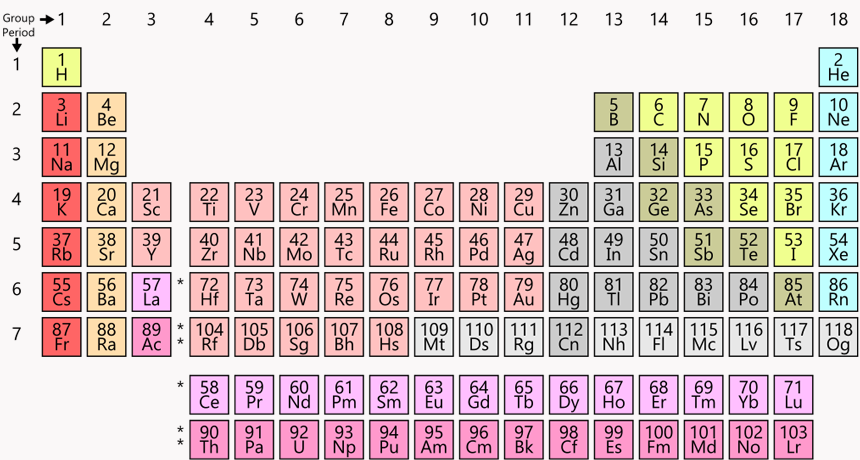
And the table is oriented differently to our modern version, with elements we now place together in columns arranged in rows. For one thing, the modern table has a bunch of elements that Mendeleev overlooked (and failed to leave room for), most notably the noble gases (such as helium, neon, argon). Fortunately, the work which led from this early intuition to the periodic table did not remain secret, for Mendeleev very much enjoyed telling the story of. Periodic Table Carbon is unique in that it is known to form up to 10 million different compounds. The organization on the table is based on the.
Old periodic table chemistry series#
Mendeleev did the same for scandium, germanium, and technetium (which wasn’t discovered until 1937, 30 years after his death).Īt first glance Mendeleev’s table doesn’t look much like the one we are familiar with. Reference Tables for Physical Setting/Chemistry 2011 Edition 7 Table O Symbols Used in Nuclear Chemistry Table P Organic Prefixes Table Q Homologous Series of Hydrocarbons Name Notation Symbol alpha particle 4 2 He or 4 2 beta particle 0 1 e or 0 1 gamma radiation 0 0 neutron 1 0 nn proton 1 1 H or 1 1 pp positron 0 +1. And for chemistry, no cause for celebration surpasses the origin of the periodic table of the elements, created 150 years ago this March by the Russian chemist Dmitrii Ivanovich Mendeleev. The periodic table is a chart that organizes the arrangement of the known and recognized chemical elements.
:max_bytes(150000):strip_icc()/element-list-names-atomic-numbers-606529_FINAL_LARGE-35fc6ad6159646a7937ca0b51220d3b3.png)
Six years later Paul Émile Lecoq de Boisbaudran, isolated gallium and sure enough it slotted right into the gap with an atomic mass of 69.7, a density of 5.9g/cm³, and a melting point so low that it becomes liquid in your hand. An International Year of the Periodic Table of Chemical Elements in 2019 aimed.
/PeriodicTableCharge-BBG-58b5c80a3df78cdcd8bbb6c8.png)
Mendeleev foretold it would have an atomic mass of 68, a density of six grams per cubic centimeter, and a very low melting point. Mendeleev, a main early creator of comprehensive periodic tables, had predicted an element would lie directly below zirconium in the periodic table.

Notice the question marks in his table above? For example, next to Al (aluminium) there’s space for an unknown metal. Wikimedia Commons Dimitry Mendeleev’s table complete with missing elements.


 0 kommentar(er)
0 kommentar(er)
